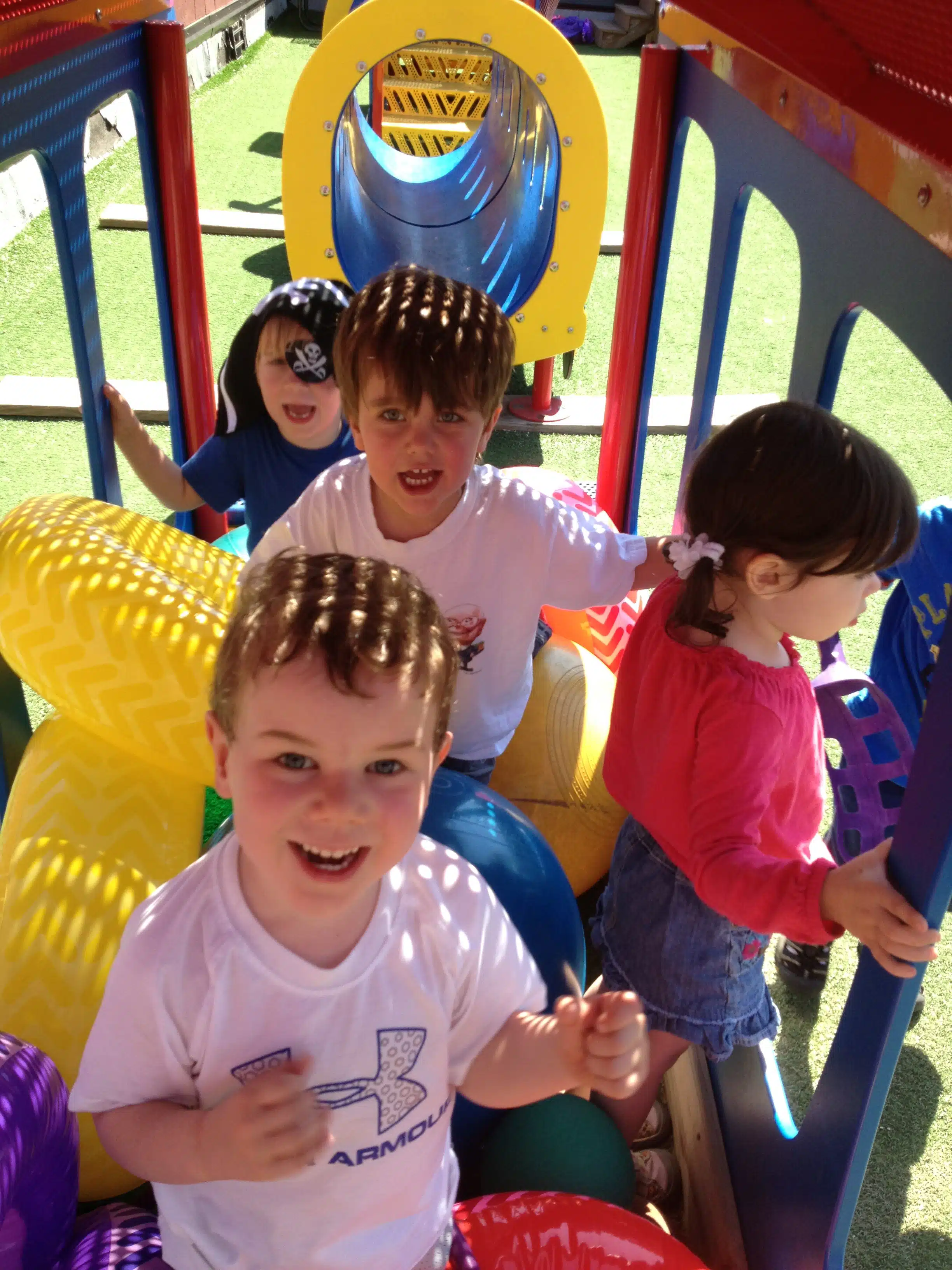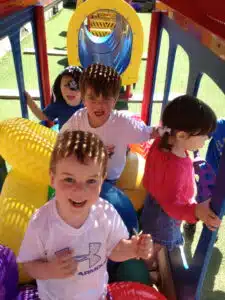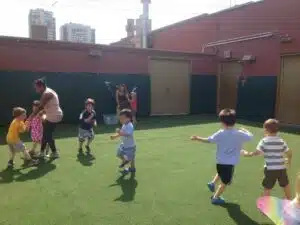One of the biggest perks of living in Chicago is the plethora of outdoor spaces we have to enjoy the amazing summer weather. Being cooped up with kids throughout the long months of winter and “spring” in Chicago leaves us craving outdoor time and space to run around. Every neighborhood throughout the city has numerous parks to explore in our own backyards, or there are the larger parks and natural areas including Lincoln Park, the beachfront, Garfield or Lincoln Park Conservatories, and the various gardens including Buckingham Fountain Flower Garden! Our city has so much to see and explore, it will keep you and your little ones busy all summer!
Kids of all ages (and parents!) enjoy playing outside! Sometimes we get into the routine of getting out, going to the park, and playing the same way every day, and we miss the opportunity to explore the world around us. There are so many different ways we can use our environment to help our children grow, learn, and appreciate the beauty of nature.
Outdoor Scavenger Hunts
Starting from birth it is so important to talk with your children, because the more they are exposed to language, the quicker their linguistics skills develop. Day to day it can be tough coming up with a variety of things to say, and it can feel like we are a broken record saying the same things. Getting out and talking about your new experiences can be a great change of pace.
“Let’s go for a walk! Look at that tree! The leaves are starting to turn green. Do you see the ladybug? What color is the ladybug?” What may seem like one-dimensional commentary for you can be extremely stimulating to infants and toddlers. And as they start to babble back, you can use what they are “saying” to respond as if you are actually having a conversation, rather than responding with baby talk. “Oh, really? You think the ladybug is red? Good job! He’s red with black spots!” This kind of back and forth modeling demonstrates to your child that what they say matters, and they love the reciprocity because it validates them.
As your little ones start to become more interactive and interested in exploring, let them walk around and pick up things—rocks, sticks, leaves, flower petals, etc. You can talk about all of these things: the color, texture, shape, and purpose. Once they are able to identify these items you can go on a simple sensory scavenger hunt. You can create a scavenger hunt spur of the moment by prompting your little one to find something simple, “Let’s find a yellow flower!” Or you can find a picture scavenger hunt online and go search for the objects from those pictures. Once your child is a bit older and beginning to sight read, you can do word scavenger hunts for items such as bugs, rocks, flowers. You can also incorporate disposable cameras; as they find an item on the list they can take a picture of it, which, once printed, can be turned into a collage or other craft.
Outdoor Sensory Play
Sensory play is another great way that young children learn about the world around them. Before parents and teachers started using sensory bins and tubs kids were exploring and engaging their senses out in the natural world. The best thing about using nature for sensory exploration is that you don’t have to clean up the mess inside!
Outdoor sensory play does not have to be planned and fancy. Simply letting your little ones dig in the dirt, sand, and grass or feel the wind on their faces and listen to the birds chirping is sensory play!
The reason sensory play is so encouraged is because more and more children are beginning to show sensory issues. Little ones aren’t moving and active outdoors like generations past. Climbing trees, spinning in circles until you fall over, and rolling around in the grass aren’t encouraged like they once were. Children today are much more sedentary because we, as adults, restrict their movement and if movement isn’t encouraged children can develop difficulties with sensory processing.
To promote sensory development while out and about in the city you can encourage balance and gross motor skills by allowing your little ones to do a balance beam along a curb or on garden stones. Balance and proprioception (awareness of your position through movement) can also be encouraged by skipping, and rolling around in the grass at the park, or spinning around in circles.
Playing in a sandbox or mud, feeling the grass with hands and feet, touching the different textures of trees and leaves are all excellent ways to not only explore nature but to also talk about nature and encourage sensory play.
Now that summer has arrived it’s time to get out of the buildings we’ve been confined to throughout the winter months and get outside for some fresh air and adventure! Help your little ones develop their sensory awareness and language skills by exploring their world and all that Chicago has to offer outside! Encourage them to get out and get active! Summer is an adventure waiting to happen!
Share you outdoor scavenger adventures with us! Shout-out @bubblesacademy on social media and tag your photo with #createyourownadventure
Ashley Newcomb is an Event and Office Rockstar at Bubbles Academy. She grew up in Oklahoma but returned to her Chicago roots to attend Erikson Institute where she earned her Masters Degree in Child Development. Ashley has worked with children for the last two decades in a variety of capacities including tutor, teacher, nanny, early literacy educator, and currently, as a baby planner and parent consultant. She is a firm believer in letting kids be kids and actively encourages the art of getting messy!



